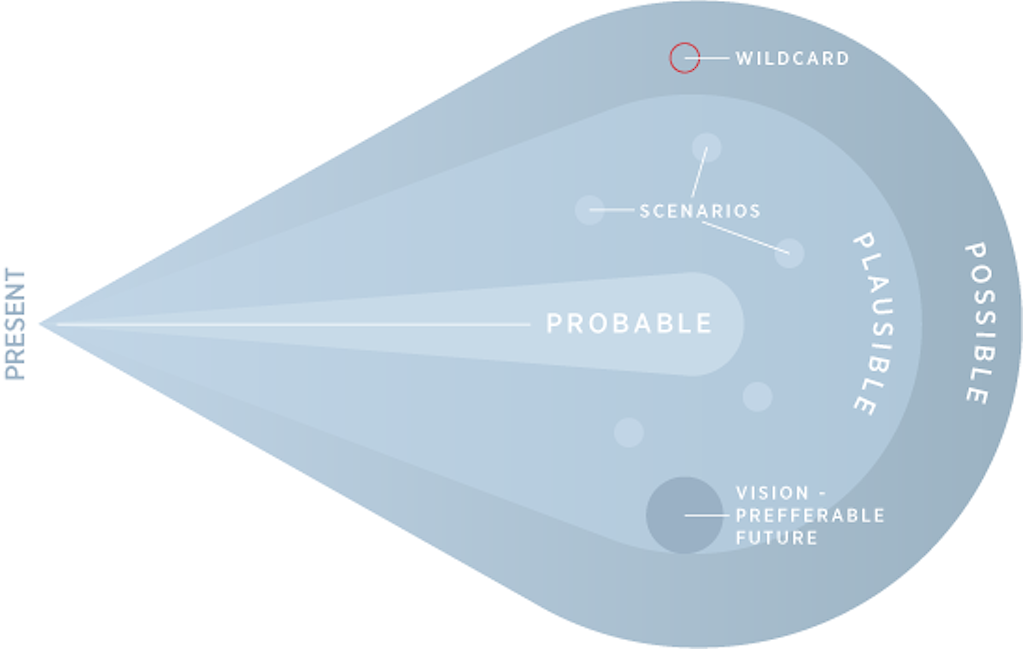
Working with wildcards and black swans – how to plan for uncertain futures
Uncertainty is at the heart of all foresight and futures work. It gives us the raw materials to create scenarios. And scenarios let us explore the future and how it might be shaped by the actions we take today.
Some things, however, are more uncertain than others. We tend to set these aside as highly improbable, while recognising they would have a significant impact if they did happen. We call these unlikely, disruptive possibilities ‘wildcards’ or ‘black swans’.
Although these terms are used interchangeably, I draw a subtle distinction. Wildcards are scenarios we can imagine, but have a very low probability of occurring. A black swan, however, isn’t even on the radar because there’s no precedent. The name comes from the fact that Europeans believed all swans were white until they saw a black one in Australia. As black swans are completely unforeseeable, we’ll focus on preparing for the unlikely wildcards.
But not all wildcards can be prepared for effectively. An asteroid striking Earth, for example, would have such vast global implications that there would be little you could do to mitigate the effects.
There are, however, wildcards that do need consideration. When he first announced his candidacy, Donald Trump’s ascendency to the role of President of the United States seemed extremely unlikely. But in just a couple of years, this event has gone from outside chance to reality.
When considering wildcards, the time horizon is also important. A breakthrough in cold fusion as a means of energy generation over the next couple of years would be a wildcard, but over the next 50 years it becomes a much more likely scenario.
It’s easy to see, then, that what we identify as wildcards depends on how we perceive the future. But what they all have in common is that they lie at the edges of what we futurists refer to as the ‘cone of possibility’ (figure A). This is why we tend to exclude them from our strategic considerations when doing scenario planning, instead focusing on the areas closer to the middle of the cone.
The breadth of the cone of possibility is determined by a combination of assumptions, personal and cultural biases and degree of familiarity with current and emerging trends. Wildcards fall outside of the cone and are often excluded from scenarios. Sometimes the likelihood of a wildcard event can increase over time, leading to it moving inside of the cone.

So is there any value to wildcards? I believe there are three key uses for the ones you identify:
1. An early warning system
You might want to keep an eye on wildcards that, although improbable, are important enough for you to need an early warning if they become more likely. To use the above example, an organisation might choose to follow developments in cold fusion research by monitoring publications or engaging with a network of experts. In the event of a breakthrough, the organisation would be better placed to take the necessary action to capitalise on, or mitigate, the development.
2. Prepare for existential threats
Some wildcards will pose an existential risk to businesses. So even though they’re highly improbable, they warrant attention. Of course, you must still have some ability to react, ruling out our asteroid strike mentioned above. An example would be Brexit – it seemed highly unlikely just a few years ago, but has now come to pass, and many organisations were entirely unprepared.
3. Spur innovation
Wildcards can be used as a catalyst for innovation and disruption. By its very nature, disruptive innovation demands something new. Using wildcards in brainstorming and ideation sessions can enrich discussions and help people to imagine ‘what if?’ Doing this can boost creativity and novel thinking that could lead to new ideas for products, services and business models.
Explore more





